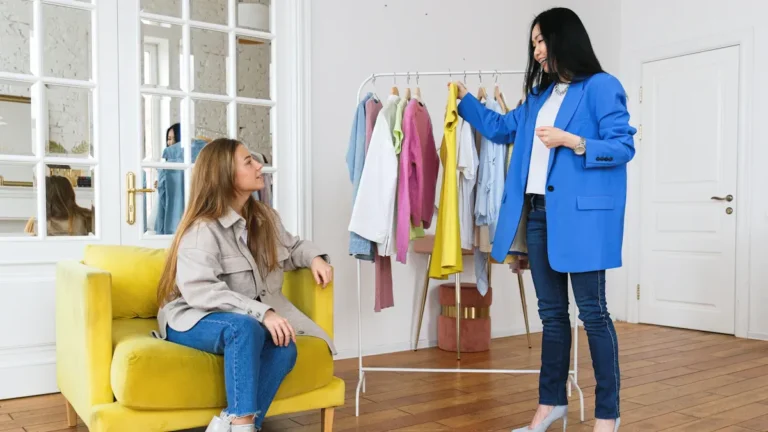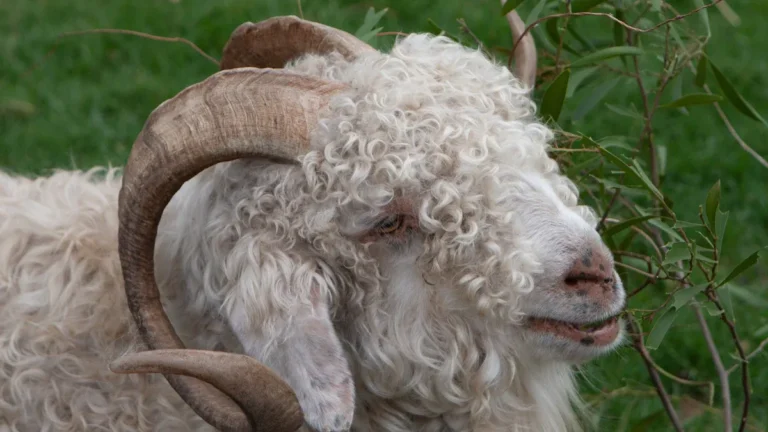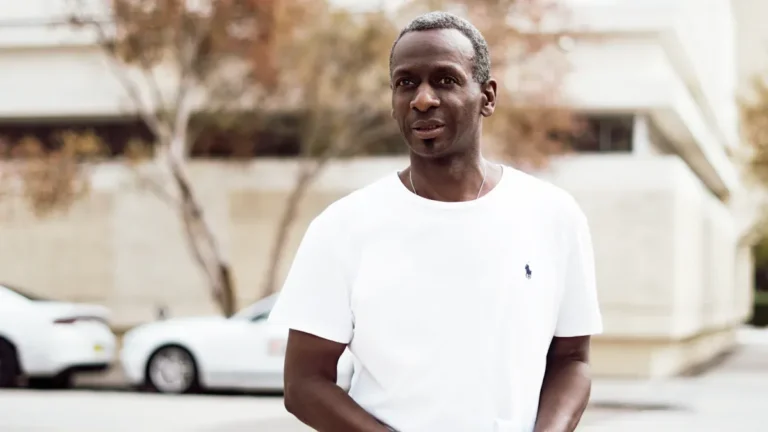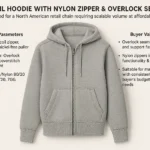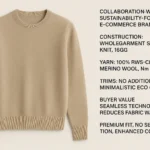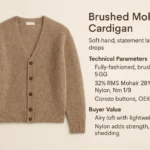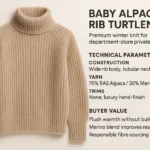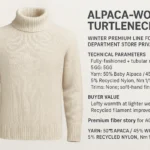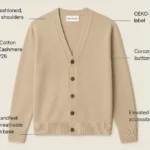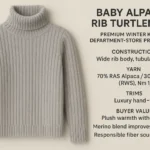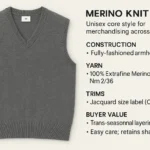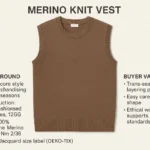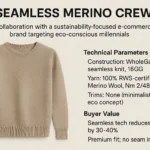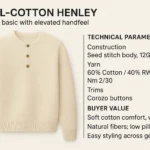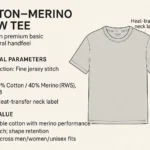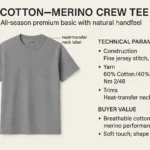
When you see Jacquard Fabric, you notice more than just fabric. This fabric is special because the patterns and textures are woven in. They are not printed or stitched on top. Joseph Marie Jacquard made the Jacquard loom in 1804. This invention changed how people made detailed designs. The fabric looks and feels fancy because of how the weave makes the patterns. Many fibers like cotton, silk, and polyester are used. These fibers make the fabric pretty and strong.
Jacquard Fabric has detailed, woven patterns that last a long time.
The designs are inside the fabric, so they last longer than printed ones.
You can see Jacquard in clothes, home decorations, and car seats.

Key Takeaways
Jacquard Fabric has detailed patterns woven into it. These patterns last longer than printed ones.
Joseph Marie Jacquard invented the Jacquard loom in 1804. This machine changed how fabric was made. It made it easy to create complex designs fast.
This fabric can be used in many ways. People use it for clothes, home décor, and car interiors.
Jacquard Fabric uses fibers like cotton, silk, and polyester. Each fiber gives the fabric special features.
You should clean Jacquard Fabric gently. Do not use strong chemicals. This helps keep it looking nice and makes it last longer.
Jacquard Fabric Overview

Definition & Key Distinctions
When you see Jacquard Fabric, you notice more than looks. The patterns are part of the fabric, not printed or stitched. Each thread is woven to make the design. This helps the patterns last longer and look sharp.
Here are some things that make Jacquard Fabric different from other woven fabrics:
Elaborate Patterns: The fabric can have complex shapes and raised textures. These details give it a special look.
Versatility: You find Jacquard Fabric in many places. It is used for clothes, furniture, and more because it can have many designs.
Durability: The fabric uses strong materials. This makes it tough and long-lasting.
Weight and Texture: Some types are light for clothes. Others are heavy for furniture.
You may wonder how Jacquard Fabric is different from other patterned fabrics. The table below shows the main differences:
Fabric Type | Weaving Technique | Appearance | Common Uses |
|---|---|---|---|
Jacquard | Uses a special loom that controls each warp thread, weaving patterns directly into the fabric. | Patterns are woven and flush with the surface. | Upholstery, Fashion, Home decor |
Brocade | Adds extra threads over and under the base fabric, making raised patterns. | Raised, three-dimensional patterns. | Formal wear, Luxurious home decor |
Damask | Uses a reversible, flatter weave. | Smooth surface with subtle patterns. | Table linens, Upholstery |
Tip: If you want a fabric with strong, detailed patterns, Jacquard Fabric is a good pick.
Historical Origin & Evolution
The story of Jacquard Fabric started in the early 1800s. Joseph Marie Jacquard was a French inventor. He wanted to make weaving easier and more creative. In 1804, he made the Jacquard loom. This machine changed how people made patterned fabric. Before this, weaving fancy designs was slow and hard. The Jacquard loom used punched cards to control each thread. This let workers make detailed patterns fast, even if they were not experts.
Here is a timeline of important events in the history of the Jacquard loom:
Year | Event Description |
|---|---|
1800 | Jacquard started inventing weaving devices. |
1803 | He made a loom for weaving fishing nets. |
1804 | He developed the Jacquard loom for patterned silk. |
1805 | Jacquard showed his loom at a French industry expo and won a bronze medal. |
April 1805 | Napoleon and Empress Josephine saw the loom in Lyon. |
April 1805 | Napoleon gave the patent to Lyon, and Jacquard got a pension and royalties. |

The Jacquard loom did more than make weaving faster. It helped more people get nice, patterned fabric. Factories could make these fabrics quicker and with fewer mistakes. The loom also led to new ideas in the textile world.
Note: The Jacquard loom was one of the first machines to use punched cards. These cards later helped inspire early computers.
Jacquard Fabric became popular because it is both pretty and strong. You can still see its style in fabrics today.
Manufacturing: How Jacquard Fabric Is Made

Jacquard Loom
The Jacquard loom is very important for making Jacquard Fabric. This machine helps people make detailed patterns. It controls each thread by itself. You do not have to weave by hand. You also do not need simple machines. The loom has special parts that help make hard designs:
Warp threads go up and down and stay tight.
Weft threads go side to side and weave through the warp.
Long ago, punched cards controlled the loom. Now, digital systems and IoT technology make weaving faster and more exact.
The Jacquard loom lets you work quickly and change things easily. Modern systems let you watch and change the process from far away.
If you look at the Jacquard loom and old looms, you see big changes:
Feature | Jacquard Loom | Traditional Loom |
|---|---|---|
Control of Threads | Warp threads are controlled together | |
Complexity of Patterns | Patterns can be very detailed | Patterns are not as detailed |
Mechanism | Uses punched cards or computers | People work the loom by hand |
Weaving Process
First, someone makes the pattern design. Designers use computer programs to plan how it looks. Next, the loom is set up with warp yarns and the design is loaded. The loom starts weaving by crossing weft yarns with warp yarns. It follows the pattern that was programmed. After weaving, the fabric is washed, dried, and treated. This makes it feel better and stronger. Inspectors look at the fabric to check if it is good enough.
Many fibers can be used to make Jacquard Fabric. Each fiber gives the fabric special features:
Fiber Type | Description | Market Position |
|---|---|---|
Soft and lets air through; good for clothes and home. | Helps the market get bigger. | |
Polyester | Strong and does not wrinkle; colors stay bright. | Changes future styles. |
Silk | Smooth and shiny; used for fancy things. | Top choice. |
Rayon | Feels like silk but costs less. | Always liked. |
Others | Mixed fibers for special uses. | Growing with eco-friendly choices. |
Pick the fiber that works best for you. Some fibers are comfy, some last long, and some look fancy.
Jacquard Fabric Properties
Fiber Composition & Material Blends
Jacquard Fabric can be made from many fibers. Each fiber gives the fabric its own feel. Cotton is soft and lets air move through. Silk is shiny and smooth. Wool keeps you warm and feels nice. Linen is light and lets your skin breathe. Blended fibers mix these good things together. This means the fabric works for all seasons. The table below shows how each fiber changes the fabric’s feel and use:
Fiber | Characteristics | Suitable For |
|---|---|---|
Cotton | Soft, breathable, opaque | Shirts, tops, blouses, dresses, pants, skirts, jackets, sweatshirts |
Silk | Smooth, glossy or dull, thin, semi-sheer or opaque | Blouses, tops, dresses, skirts, scarves, lingerie, ties, lining |
Wool | Soft, cozy, opaque | Dresses, jackets, skirts, pants, coats, blazers, sweatshirts, cardigans |
Linen | Soft, breathable, opaque | Dresses, shirts, skirts, tops, pants, wraps |
Blend | Various degrees of transparency, suitable for all seasons | Shirts, tops, blouses, dresses, pants, skirts, jackets, sweatshirts, coats |
Blends like cotton-polyester are soft and strong. These blends do not wrinkle easily and last longer. This makes Jacquard Fabric good for daily clothes and special outfits.
Texture, Pattern Complexity & Surface Effects
Jacquard weaving makes many textures and patterns. You can see flowers that pop out or shapes that look stacked. The weaving gives a 3D look to the fabric. Some Jacquard feels soft and light. Others feel thick and tough. The patterns are woven in, so they do not come off. You can see shiny or dull spots, which change in the light.
Jacquard patterns are deeper and last longer than printed ones. The fabric feels bumpy and stays nice.
Here is a table comparing Jacquard patterns and printed textiles:
Feature | Jacquard Patterns | Printed Textiles |
|---|---|---|
Design Complexity | Geometric, repeatable, woven in | More varied, printed on surface |
Color Limitation | Fewer colors, thread-based | Wide range, ink-based |
Texture | Textured, part of fabric | Flat, surface only |
Durability | Long-lasting, does not fade or peel | Can fade or peel over time |
Durability and Composition
Jacquard Fabric is made to last a long time. The weave spreads out stress, so it does not tear easily. Strong yarns and lots of threads make it tough. The patterns are inside the fabric, not just on top. Many Jacquard fabrics keep their color because the yarns are dyed first. Some types look good on both sides, so you can use either side.
The basketweave makes the fabric stronger.
More threads mean more strength.
Jacquard Oxford fabric lasts longer than plain or satin fabrics.
If you want fabric that stays nice and strong, Jacquard Fabric is a great pick.
Applications & Use Cases
Fashion & Apparel
Jacquard Fabric is used in many clothes. Designers pick it for its pretty patterns and how long it lasts. This fabric works for fancy and everyday outfits. You can find it in men’s suits and women’s dresses. It is also in sweaters and gloves for winter. The woven patterns do not fade, so clothes look nice for years.
Here is a table that shows how it is used in fashion:
Application Type | Description |
|---|---|
Men’s Suits | Used to make formal suits for men. |
Women’s Dresses | Used for fancy dresses for women. |
Casual Clothing | Found in shirts and simple dresses. |
Winter Clothing | Used in gloves and sweaters for cold days. |
Evening Gowns | Used for pretty dresses worn at night. |
Blazers | Used in nice jackets for special events. |
Wedding Dresses | A favorite for wedding gowns. |
Skirts and Jackets | Often used in skirts and jackets. |
Blouses |
Clothes made from this fabric feel good and look great.
Home Décor
You can see Jacquard Fabric in many home items. Its strong weave and nice patterns make it popular. You might see it on your couch, curtains, or bed. The fabric keeps its look for a long time. Your home stays bright and pretty.
Some common uses in home décor are:
Upholstery
Drapes
Bedding
Tablecloths
Throw pillows
Wall art
Jacquard fabric is special because its patterns and colors last. The designs do not peel or fade away. You can use it for bedding and couches, and it will stay nice. The fabric fits many styles, from old to new.
Specialty & Technical Uses
Jacquard Fabric is also used in special jobs. In cars, it helps make airbags, seatbelts, and inside linings. The fabric is strong and helps keep people safe. In hospitals, it is used for medical cloth that needs special shapes.
Some special uses are:
Airbags with strong seams for safety
Seatbelts that help protect you in a crash
Inside linings in cars
Covers that protect cars
Medical cloth with special loops and shapes
Jacquard Fabric gives both beauty and strength to many things.
Care, Maintenance & Longevity
Cleaning
You want your Jacquard fabric to look its best for years. Start by checking the care label. This label gives you the safest cleaning instructions. If you do not see a label, treat the fabric gently. Jacquard fabric has a special weave that can get damaged by rough handling or harsh chemicals.
Here are some tips to help you clean Jacquard fabric safely:
Always check the care label for special instructions.
Use a mild, color-safe detergent in cool water if hand washing is allowed.
Blot stains with a clean, damp cloth. Do not rub or scrub hard.
Never use bleach. Bleach can weaken the fibers and fade the patterns.
Lay the fabric flat to air dry. Keep it out of direct sunlight and away from heat.
If ironing is needed, use a low temperature and a pressing cloth.
For some Jacquard fabrics, professional dry cleaning is best.
Vacuum upholstery regularly with a soft brush to remove dust.
Tip: Avoid machine washing or tumble drying. These methods can twist or shrink the fabric and ruin the patterns.
Improper cleaning can shorten the life of Jacquard fabric. Too much heat or rough washing can flatten the patterns and make the fabric look dull. Dry cleaning too often can also break down the fibers.
Handling Wear & Damage
Jacquard fabric can last a long time if you care for it well. You should check your fabric often for small snags or loose threads. If you find a snag, gently push the thread back into place with a fine needle. Trim any loose threads with sharp scissors, but do not cut too close to the weave.
Follow these steps to keep your Jacquard fabric in good shape:
Rotate your Jacquard items with others to prevent overuse.
Spot clean minor stains with mild soap and cold water.
Use a steamer for wrinkles instead of ironing directly.
Reinforce thin spots with hand-stitching using matching thread.
Inspect edges and seams for early signs of wear.
Note: Limit washing and try airing out your Jacquard pieces instead. This helps the fabric keep its shape and beauty.
Regular care and gentle handling help your Jacquard fabric stay beautiful and strong for many years.
Buying Guide & Selection Tips
Matching Fabric to Use
When you pick Jacquard fabric, think about your needs. Decide where you will use the fabric. Is it for a fancy party or daily clothes? Look at the color and texture. Colors should go well together. You can use a color wheel to help match colors. Texture is important too. Mixing smooth and rough textures makes things look cool. Big patterns are good for curtains or large items. Small patterns work better for shirts or small things.
Factor | Description |
|---|---|
Occasion | Think about where you will use the fabric. Fancy events need special fabric. |
Color Harmony | Pick colors that look nice together. Use a color wheel if you need help. |
Texture Balance | Mix smooth and rough textures, but do not make it too busy. |
Scale | Use big patterns for large things and small patterns for small things. |
Tip: Make sure the fabric matches what you want to do.
Sample Evaluation & Testing
Check Jacquard fabric before you buy a lot. Testing helps you know if it is strong and looks good. Feel the fabric and look for any problems. Measure how heavy it is to see how thick it feels. Count the threads to check how packed it is. Look at how the threads cross each other. Test if the fabric makes little balls after rubbing. See if it stays nice after you use it. Check how strong it is so it does not tear.
Weight per Square Meter: Tells you how thick the fabric is.
Warp and Weft Density: Shows how many threads are in the fabric.
Fabric Weave: Lets you see how threads cross.
Resistance to Pilling: Checks if the fabric gets fuzzy balls.
Resistance to Abrasion: Tests if the fabric stays nice after rubbing.
Tensile Strength: Shows how hard it is to tear.
You can use different ways to check quality. You can look and touch the fabric yourself. Machines with cameras can find problems. Computers can spot issues fast. Some methods mix these ideas. Watching the fabric as it is made helps catch problems early.
Method Type | Description |
|---|---|
Manual Inspection | People look at the fabric and check for problems. |
Machine Vision Systems | Cameras and computers find defects in the fabric. |
Computers learn to spot problems quickly. | |
Hybrid Methods | Mixes different ways to find more problems. |
Real-time Monitoring | Checks the fabric all the time for issues. |
Cost Drivers & Quality Indicators
Some things make Jacquard fabric cost more or less. The price depends on the fibers, machines, and how it is made. Good Jacquard uses strong fibers and has nice patterns. Tough fabric lasts longer and keeps its shape.
Quality Indicators | |
|---|---|
Cost of raw materials | What kind of fibers are used |
Machinery requirements | How detailed the patterns are |
Production processes | How tough the fabric is |
Note: If you want the best Jacquard fabric, pick strong fibers, nice patterns, and a sturdy weave.
Jacquard Knitwear Supply: The Azknit Model
Overview of Azknit’s Jacquard Knitwear Solutions
If you want knitwear with cool patterns, Azknit is a good choice. Azknit uses new machines to make Jacquard Fabric knitwear that looks special. You can ask for your own designs, and Azknit knits them right into the fabric. This way, there is less waste because Azknit only makes what you order. You do not end up with extra pieces or leftover materials. This helps the planet and gives you a high-quality product that lasts a long time.
Customization & Design Capabilities
You can team up with Azknit to make your own patterns and colors. The design team helps turn your ideas into real knitwear. You can pick from lots of yarns and textures. Azknit’s machines can make hard patterns, so your knitwear looks just how you want. You get to see a sample before they make the whole order. This helps you know what your finished product will look like.
Production Process & Quality Assurance
Azknit uses clear steps to make sure you get great knitwear. First, you talk with the team about what you need. Then, they make samples for you to check. When you say yes to the sample, they start making your order. They check quality at every step. Azknit tests the fabric’s stretch, color, and strength to make sure it is good.
Quality Assurance Process | Description |
|---|---|
Stretch Test | Checks if the fabric is stretchy and strong. |
Abrasion Resistance | Makes sure the fabric does not wear out fast. |
Color Fastness | Checks if the color stays bright and does not fade. |
Quality Management System | Makes sure every piece is top quality. |
Quality checks happen all the time. Each step helps keep your product safe and reliable.
Product Range & Applications
Azknit makes many kinds of knitwear. You can get sweaters, cardigans, scarves, hats, and other items. These products are used by fashion brands, sports teams, and companies. Azknit’s Jacquard Fabric knitwear works for uniforms, gifts, or store collections. The many choices in design and making help you fit different needs.
Jacquard Fabric is special because its patterns are woven in. They are not printed on the surface. Joseph Marie Jacquard invented a loom that changed fabric making. Now, computers help looms make many designs fast. Factories use digital tools to make custom patterns quickly. This saves time and lets them make many styles. Jacquard Fabric is strong and looks nice. People use it for clothes, home items, and special jobs. New machines and green rules help the industry get better and grow.
FAQ
What makes Jacquard fabric different from printed fabric?
You see patterns woven right into Jacquard fabric. Printed fabric has designs on the surface. Jacquard patterns last longer and do not fade or peel. You get a richer texture and a more durable finish.
Can you wash Jacquard fabric at home?
You can wash some Jacquard fabrics by hand with mild detergent. Always check the care label first. Use cold water and avoid harsh scrubbing. For delicate or expensive items, dry cleaning works best.
Is Jacquard fabric good for hot weather?
You can wear Jacquard fabric in warm weather if it uses light fibers like cotton or linen. These fibers let air move through the fabric. Heavy Jacquard, like wool blends, works better for cooler days.
Does Jacquard fabric wrinkle easily?
Jacquard fabric resists wrinkles better than many other fabrics. Blends with polyester or wool stay smooth longer. You can keep it looking neat by hanging or folding it right after washing.
Where do you see Jacquard fabric used most often?
You find Jacquard fabric in clothing, home décor, and car interiors. People use it for dresses, suits, curtains, upholstery, and even seat covers. Its strong weave and lasting patterns make it a top choice for many uses.






